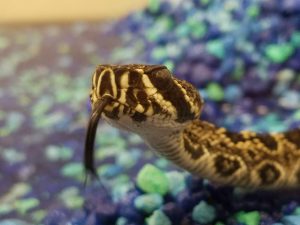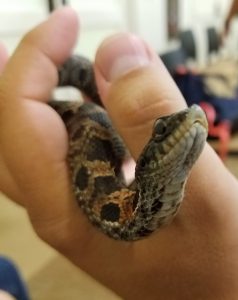Here in Florida, we have snakes. Some may say we have lots of snakes. While their presence may be something to be expected out in wild areas, homeowners often find it alarming when these creatures show up near places where we live. The reaction is often a simple one: if it is a snake, kill it.
Dealing with snakes should not be like this, however. Although some are venomous, many others are harmless to humans and make valuable contributions to the local ecology. As more natural areas become developed, wildlife such as snakes are increasingly pushed into close contact with people, so learning to live with them is important.
Of the 46 species of snakes found in Florida, only 6 are venomous. The chances of being bitten by one of these venomous snakes is very low; there are only 7,000-8,000 bites in the entire U.S. each year. Fatalities are even more rare, with less than ten people typically dying across the country annually from venomous snakebites. In a country with a population of around 330 million, that’s not a lot.
Snakes, especially venomous ones, should be treated with respect, however. Knowing how to identify a snake can be an important step in knowing how to react to them, and understanding their behavior can help avoid unfortunate encounters. The venomous snakes we have in Florida are the copperhead, the coral snake, the cottonmouth or water moccasin, the Eastern diamond-backed rattlesnake, the pygmy rattlesnake, and the timber rattlesnake. For help in identifying these species, see our guide on EDIS at https://edis.ifas.ufl.edu/publication/UW229.
Understanding snake behavior, including their feeding habits and preferred habitats, is also important. If you can make the areas you live in less hospitable to snakes, especially venomous ones, they’ll be less likely to move in. This doesn’t mean getting rid of every snake out there – some snakes that are harmless to humans may be predators that consume other snakes (including venomous ones) or rodents. Because venomous snakes often consume rodents and other small animals, allowing the nonvenomous ones to control populations of prey can help keep dangerous snakes out!
Watch out for areas where snakes may shelter, including tall grass, overgrown shrubs, piles of brush and wood, or debris. There is no need to remove all such things from a property, as other wildlife use them as well, but keep them away from houses and areas where people frequent. Also be sure to keep rodents under control in and around buildings to avoid attracting snakes that feed on them. You can find more information on managing habitat to deal with snakes at https://edis.ifas.ufl.edu/publication/UW260.
- The Eastern Lubber Grasshopper - June 5, 2025
- Grass is Growing; Time for Mowing - April 30, 2025
- Variegation, Viruses, and You - June 27, 2024


